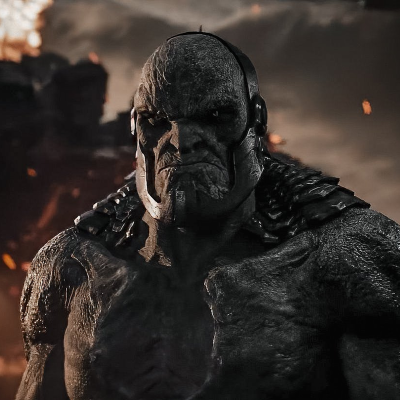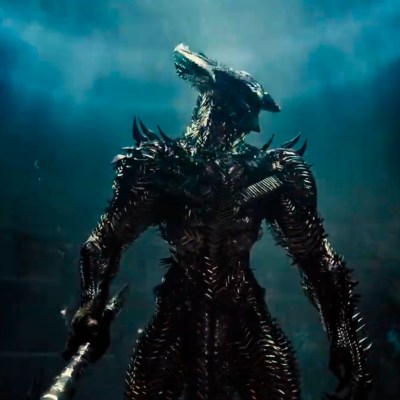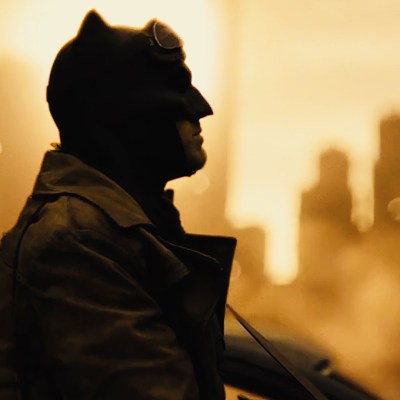Injustice Beat Zack Snyder’s Justice League to the Punch
Can the best version of Zack Snyder's Justice League vision be found in the Injustice games?

The release of Zack Snyder’s Justice League is a moment that belongs to the fans who petitioned for years to not just see a more definitive version of 2017’s Justice League but director Zack Snyder‘s complete vision for a Justice League film.
While the discourse over the quality of that vision will wage on, our own critic suggests that Snyder doesn’t quite achieve his goals for a Justice League film much less the idea of a live-action Justice League film so good that it somehow becomes hard to imagine that idea ever being done better. Perhaps some of those shortcomings can be attributed to the unique nature of his cut’s development and release, but there’s still a feeling that Snyder is chasing something he may not have the chance to catch.
What’s remarkable about his pursuit, though, is that in a strange way, we may have already seen an earlier and better version of many of Snyder’s ideas in NetherRealm Studios’ Injustice series, an incredible DC fighting game franchise that features epic superhero storytelling worthy of the big screen.
The idea that a fighting game series could surpass two cuts of a live-action Justice League film will probably sound like an exaggeration to some. Yet, the most shocking thing about the Injustice series isn’t the quality of the games, it’s the way that they superbly handled so many of the exact ideas that Snyder tried to emphasize in his three DCEU movies.
Injustice Shows a Batman/Superman Conflict Done Well
In spite of his better efforts, Zack Snyder struggles to effectively showcase a Batman/Superman conflict that is compelling for reasons beyond the prestige and power of the characters. Snyder’s Batman vs. Superman fights often come across as little more than a couple of alpha males posturing over the idea that the town just ain’t big enough for the two of them.
Injustice takes a different approach. By focusing on the idea that Batman and Superman are separated by their abilities to live with tragedy (especially after the death of Lois Lane), and their radically different philosophies regarding how to use their powers, Injustice forges a far more complicated relationship between DC’s two giants.
The Batman and Superman of Injustice 2 see different paths to similar goals. They don’t want to battle each other to prove who is best, and their inevitable battle is treated as the tragic results of all other options failing.
Injustice Effectively Portrays a Morally Ambiguous Superman
While Snyder’s portrayal of Batman tends to draw more heat, his take on Superman has been the subject of debate. He seems to be more interested in showing Superman as a figure who struggles to repress his godlike powers rather than as a beacon of hope for humanity. As a result, Snyder’s Superman more often comes across as a particularly large wrecking ball with a sour disposition. It’s not inherently wrong to portray a more morally ambiguous Superman; Snyder’s films just haven’t handled that approach especially well.
The Injustice series features a far more interesting take on the Man of Steel. The Superman we find in Injustice still believes in being a hero, but a series of tragic events convince him that the best thing he can do for Earth is to be its unflinching mighty protector.
It’s a believable enough evolution of Superman’s mythology that becomes much darker once you see the tyrannical methods Superman is willing to employ in the name of “protection” and “justice.” He still believes himself to be a hero through it all, and the true tragedy is how we still very much want him to be that hero even as we question how far gone he is…and how far we’d go to preserve the idea of him we’ve crafted in our minds.
Injustice Balances a Huge Roster of DC Characters and Their Motivations
Both versions of the Justice League film have their ups and downs, but one problem each shares is a struggle to effectively manage the various team members and showcase them in ways that feel like they’re both getting their own stories and contributing to the larger plot. Snyder’s version is largely superior in that pursuit, but his four-hour epic still sees major characters disappear for long stretches of time and sometimes feel frustratingly interchangeable.
Injustice 2 is far from perfect when it comes to balancing all of its characters, but the game generally does a better job of managing its many heroes than Snyder’s superhero films. In a game that includes everyone from Batman and Superman to Swamp Thing and Blue Beetle, nearly every hero, villain, and major DC character is given a moment to shine as well a role in the greater narrative at play. Even when Injustice 2 becomes almost too much to keep up with, it usually finds a way to pull us back in by leaning into primary characters and storylines.
Injustice’s Villains Feel Like Properly Developed Characters
Despite Snyder’s attempts to improve Justice League’s villains, the film’s big bads — Steppenwolf and Darkseid at the forefront — rarely rise above simply being big and bad. They’re appropriate enough threats given the power levels of the heroes they’re up against, but they add little to the narrative beyond being the centerpiece for the inevitable big battle. They rarely rise above that “charging bull” description Alfred uses at one point.
This is one area where the Injustice series feels like the clearly better version of what Snyder is trying to accomplish. The first game sees The Joker and Lex Luthor (among others) mastermind a convincing plot designed to destroy the Justice League from within, while the second game employs Brainiac as the biggest new villain in a game certainly not lacking in them. The latter example is closer to the kind of bad guys that Snyder employs, but in Brainiac, we get a galactic level threat whose motivations are tied to the consequences of the hero’s actions and whose own actions genuinely left us wondering what would remain of the world that was left behind.
Injustice Successfully Sells the Theme of Unity Better Than the Justice League Films
Both cuts of Justice League film really try to sell the importance of these heroes coming together. The problem is that idea rarely goes beyond the “Megazord” philosophy which states that the only way to beat Rita Repula’s engorged creation is to join forces for the ultimate show of strength. There are few attempts to really emphasize the value and complexity of coming together, and what little efforts are made are drowned out by the spectacle.
The Injustice series handles the heroes ultimate coming together a little more effectively by showing us how the pursuit of unity is a constant battle. Even when Superman and Batman put their philosophical differences aside for a time to battle an exterior threat, there’s the lingering implication that the only thing that keeps them together is a threat that has the chance to destroy the world before they can play out their own conflict.
Justice League treats the idea of uniting together as little more than another example of the “getting the band together” trope. In Injustice, we see how such alliances are constantly tested and how our heroes must continuously battle threats from the inside and out to remain truly united.
Injustice’s Dark Tone Is Complemented by Effective Moments of Levity
Snyder’s DCEU superhero films aren’t devoid of humor, but so much of the humor of those films feels like the result of a realization that there hasn’t been a joke in a while so someone better put one in there. We’ve seen what happens when someone tries too hard to turn a superhero film into a comedy, but that general lack of levity in Snyder’s recent efforts means that heavy moments sometimes don’t land as well as they should because there is so little to measure them against.
The Injustice games, meanwhile, are about as dark as DC storytelling can get. They deal with death, grief, corruption, and the loss of hope. Yet, they still find room for little moments of humor or lighthearted observations that aren’t just genuinely funny but feel appropriate for their characters and the situation.
When Robin says to Batman, “So you won’t kill, but you’re fine with traumatic brain injuries,” in Injustice 2, it’s both a great joke and a sly way of showing Robin feels that Batman is being a bit hypocritical by not seeing Superman’s point of view. There are too few instances of that kind of humor in the Snyder films.
Justice League’s Fights Effectively Help Tell a Story
If the Injustice games were little more than a tournament fighter-style title, they would likely still be respected for their rosters, customization options, and mostly solid mechanics. Of course, the Injustice games go a step further by telling truly epic story.
What’s really impressive are the ways that the game splices those tournament fighter matches into the narrative. It’s not always perfect (how many times do you have to beat up Bane?), but the way that the games utilize those fights as the culmination of major plot points helps sell the importance of the narrative moments as well as what is at stake during what would otherwise be fairly standard single-player fighting game matches.
By comparison, Snyder sometimes struggles to really sell the story during large action sequences just as one of his weak points as a filmmaker is finding the “action” and intrigue in extended dialogue sequences. Action and storytelling in those films sometimes feel like separate blocks rather than two ideas that should flow together.
Injustice Builds Off and Improves What Came Before
DC films do not need to be like MCU films to succeed, but the lack of a cohesive DCEU structure has certainly hurt previous DC films and Snyder’s work in particular. While Snyder tries to tie Man of Steel, Batman vs. Superman, and Justice League together, there are very few instances where those movies truly benefit from their association with each other.
Injustice is an example of how the DCEU could have utilized more unified storytelling in its own way. By balancing sometimes maddening multiverse shenanigans, Injustice 2 picks up the best threads that its predecessor left dangling while also honoring that game’s story as a standalone experience that doesn’t demand a “next chapter” to work.
At the same time, Injustice 2 could easily be enjoyed as a standalone experience but works best when you’ve taken the time to familiarize yourself with the larger stories in play. It’s the kind of serialized storytelling that Snyder tries to utilize from time to time but ultimately falls short of properly mastering.
The Injustice Series Utilizes the Best of Video Games and Filmmaking
While Snyder has stated that some of his works are inspired by video games (he even said at one point that he would reward himself for making progress on Man of Steel by playing Call of Duty which…certainly fits), that comparison is more often brought up as a criticism by those trying to categorize his works as all style and no substance.
That’s a criticism that often undermines the fantastic storytelling of so many video games, but it becomes a bit more valid when you consider that Snyder’s real problem may be that he struggles to find that balance between spectacle and story that the best AAA games often achieve.
Again, you can’t say that Injustice is perfect in this pursuit, but there is something undeniably impressive about how it combines the best of game design with what we typically call “Hollywood filmmaking.” One minute, you’re customizing your gear and learning new combos in Injustice 2, and the next sees you swept off your feet by stunning cinematic sequences that advance the story through strong dialogue, exceptional cinematic design, and incredible visuals.
Snyder has succeeded in the past in terms of utilizing more video-game-like visuals and design concepts, but with his DC superhero films, he often struggles to blend film and video games in the ways that have come to define the Injustice series.



